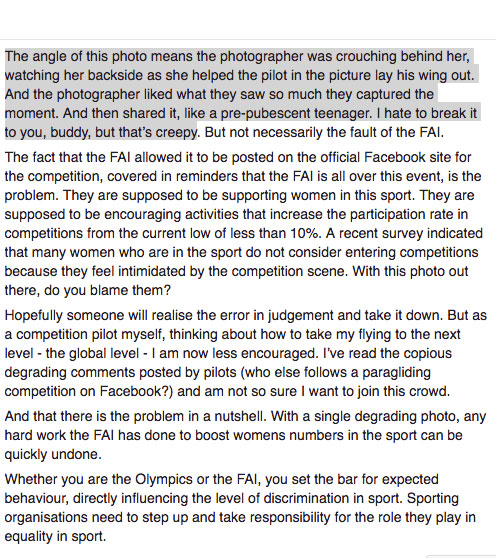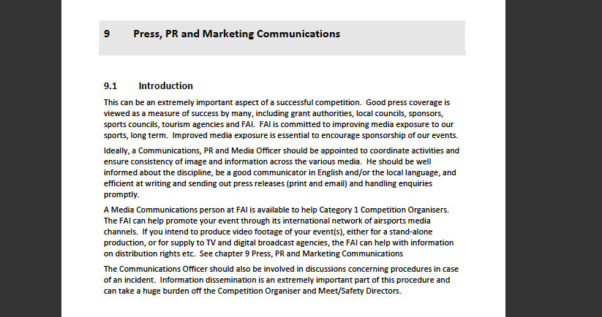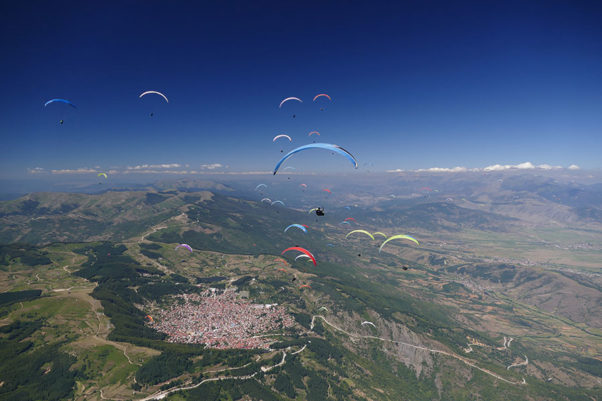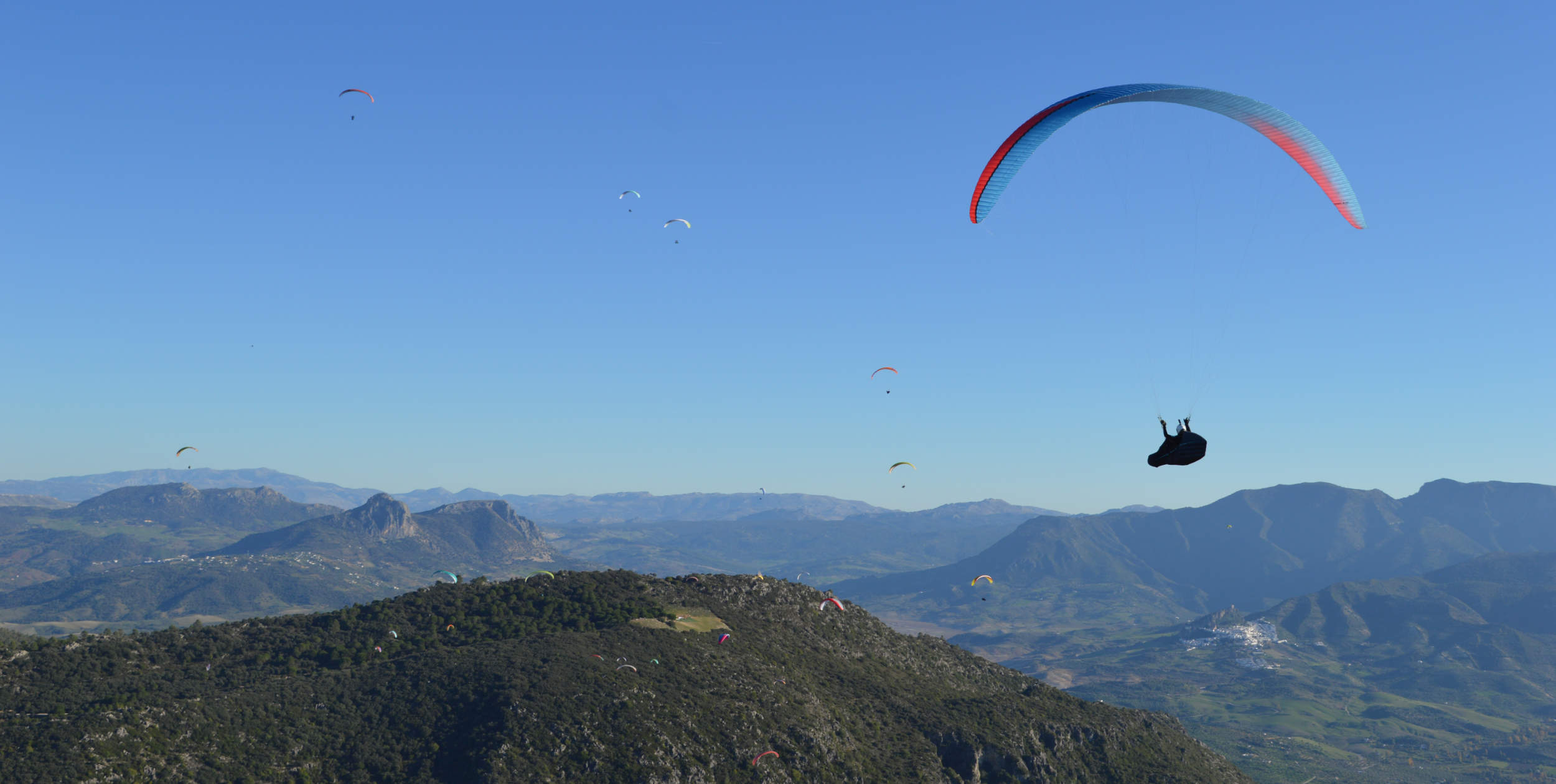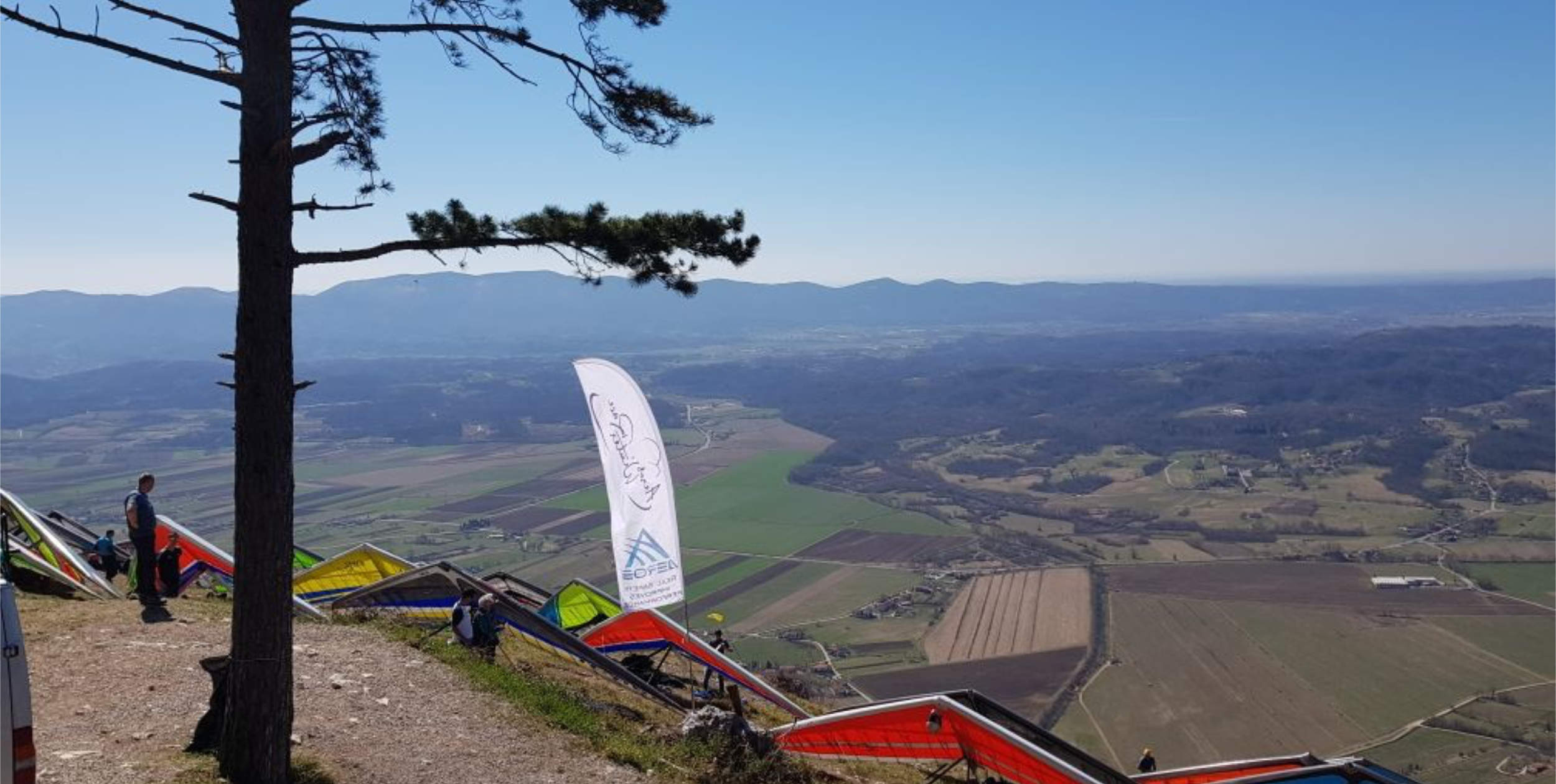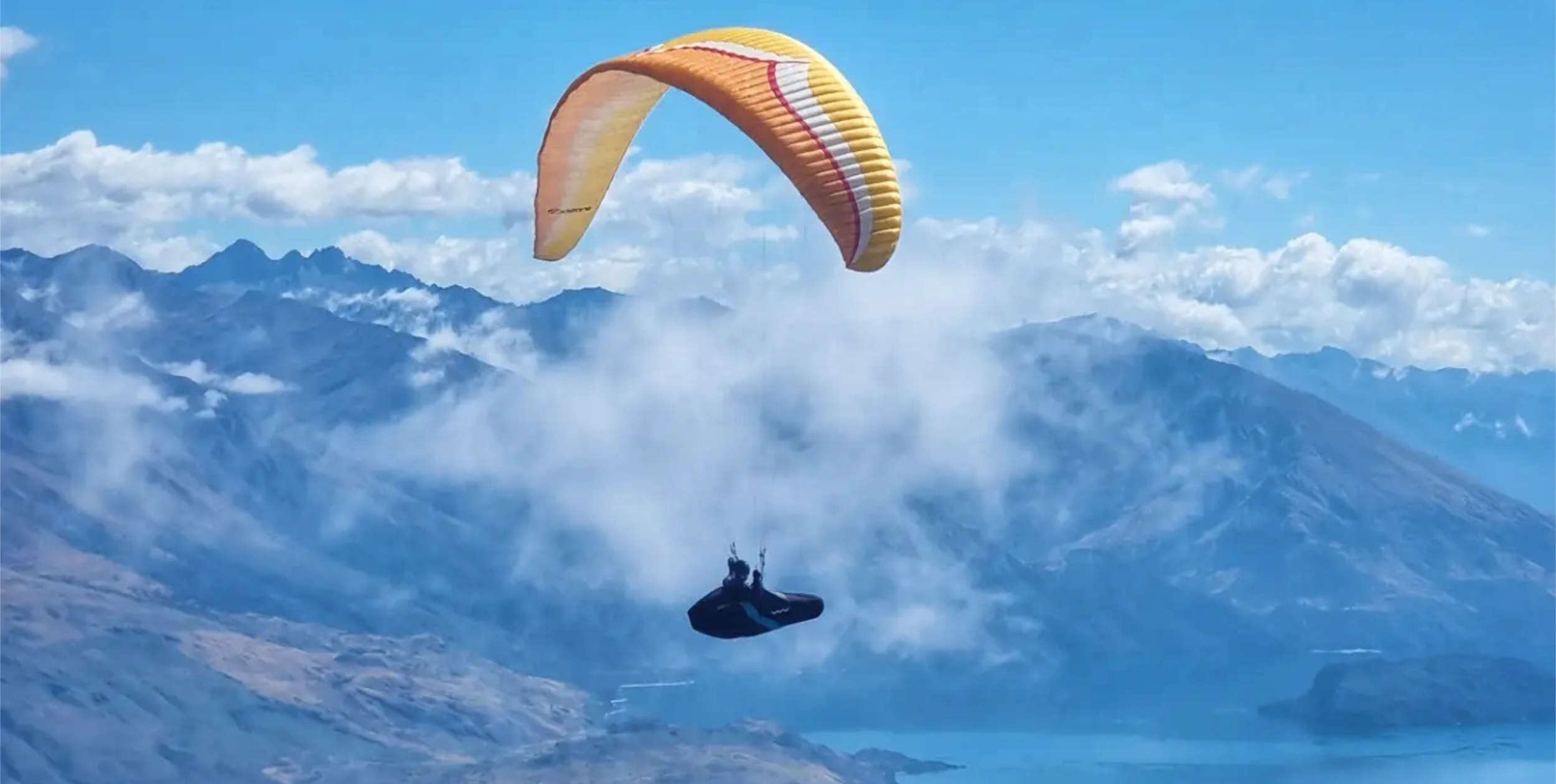
This photo was posted on the competition media channels. Photo: European Paragliding Championships 2016
Cross Country magazine editor Ed Ewing chucks his oar into the murky waters of bikini-gate
When I saw the photograph of the woman in the bikini posted on the AirTribune page of the FAI European Paragliding Championships 2016 I winced. It’s clearly meant as a visual low wolf-whistle, not as some artistic paean to the beauty of the female form. A wink to the crowd about a pretty bum and a woman’s body.
I was not surprised then when Kirsten Seeto, an Australian paraglider pilot, called it out on her Facebook page as sexist. Neither was I surprised at the (very) mini clash-of-civilisations that followed online (“It’s only a bit of fun” / “We’re not in the 1970s you know” / “Feminists, the worst kind of folk, followed by racists and peadofiles [sic].”)

A messaging discussion between two pilots over the post by Kirsten Seeto complaining about a photo posted to the FAI European Paragliding Championships Facebook page
Nor was I surprised that, unfortunately, Kirsten had taken aim at the wrong target, that is, the FAI, the World Air Sports Federation.
She wrote:
“The problem with sexism in sport in a single photo. This was posted on the 14th FAI European Championship Facebook site, by a site admin. It was taken at a paragliding competition run by the FAI. The FAI is the World Airsports Federation, representing paragliding (amongst other airsports) globally. They do things like run world championships and calculate world rankings.”
I sighed (it was Friday evening and there are soooo many more interesting things to do than discuss the FAI and its bureaucratic tentacles on a summer Friday night) and then I messaged her.
“Hi Kirsten, FYI the FAI sanction events they don’t run them. FAI have nothing to do with media output by competition organisers … attacking FAI is wrong target, it’s the [competition] organisers not the bureaucrats.”
She replied: “Thanks Ed. Will clarify this on the post, but if I made this mistake others will too.”
I replied: “It is a very common mistake. No one understands the role of the FAI in comps. They are a sanctioning body, not organising.”
The mistake is understandable – all the big comps are labelled ‘FAI World Championships’ or ‘FAI European Championships’. The medals have ‘FAI’ all over them and there are ‘FAI Rules’ and ‘FAI Observers’ at all the big competitions in both hang gliding and paragliding.
The casual observer might be forgiven for thinking there is an army of FAI people moving around the world erecting tents and running world championships in paragliding, gliding, paramotoring, hang gliding, sky diving and numerous other air sports.
The reality could not be further from that. The FAI is the World Air Sports Federation and it is simply a bureaucracy. Its offices are in the Maison du Sport in Lausanne, Switzerland, where it deals not only with paragliding and hang gliding, but parachuting, gliding, ballooning, micro lighting, powered aerobatics and even aeromodelling. The thousands of people who actually run competitions in air sports are mainly volunteers with long histories in their chosen sport – they walk among us, they are us.
The Maison du Sport houses the HQ of “around 30” other international sports federations and organisations and is styled as “the home of international sport”.
Lausanne is also home to that biggest of big cheeses in international sport, the IOC, the International Olympic Committee. So it’s like the centre of the world for sports administrators and people with a blazer collection.
The FAI was founded in 1905 and about 18 10 people work for it. Its aims have remained essentially unchanged for more than a century. They are: “furthering aeronautical and astronautical activities worldwide, ratifying world and continental records and coordinating the organisation of international competitions.”
You will notice there is no mention there of actually organising competitions, only coordinating. That means pen-pushing and paper-shuffling and worrying about flags, medals, rules and whether you can download the Russian national anthem from iTunes.
The people who do the actual organising of competitions are Other People – they are the “local organisers” in the jargon. They tend to be pilots, like us. They are us.
To hold a big competition like a European of World Championships is a big deal. It costs a lot of money and involves a lot of time and energy.
Local organisers might decide to bid for a World or European Championships for several reasons. They might be trying to promote their area as a flying destination; they might really love the sport; they might have made a bet in a bar; they might think there is money to be made.
Typically, a local organiser will bid for the championship at least two years ahead, if not more. They will then set out to raise support from local and national tourism agencies, local businesses and other sponsors. Pilots also pay a fee to enter the championship.
Typically, a World Paragliding Championship or similar will have a budget of at least €150,000, if not more.
Like anything with a substantial budget, these things don’t just happen, they are planned – often for years ahead.
To help in the planning of big international paragliding and hang gliding championships in August 2013 the FAI produced a document entitled ‘Practical Guidelines for CIVL/FAI Category 1 Competition Organisers.’
It is 63 pages long, and includes 10 chapters. Chapter 9 is dedicated to ‘Press, PR and Marketing Communications’.
The first paragraph explains why media coverage is to be taken seriously: “Good press coverage is viewed as a measure of success by many, including grant authorities, local councils, sponsors, sports councils, tourism agencies and FAI.”
It adds: “Media exposure is essential to encourage sponsorship of our events.”
In other words, it’s about the money! Get good press coverage and you will make your sponsors and supporters happy. You need sponsors and financial supporters to have a competition, unless you want your pilots to pay a €1,000 entry fee each.
In a perfect world, explains this looong FAI document, there will be a media plan, a press pack, logos, a website and social media, a press liaison officer, an archive of material, and you will sell the media rights to the competition for actual money. There will also be an emergency plan for dealing with media enquiries, for if and when your pilots crash or land on the roof of the local school.
Overseeing all this will be a media officer: “Ideally, a media officer should be appointed to coordinate activities and ensure consistency of image and information across the various media.
“[S]He should be well informed about the discipline, be a good communicator in English and/or the local language.”
All this sounds great in theory, but in practice of course it’s very different. Usually social media is handed over to the one who knows how to use it (i.e. the youngest) and photography, reporting and communication with the outside world gets lost in the whirlwind of running a big comp. Managing media is an unnecessary distraction for any competition director and is far down the list.
I’ve had the privilege of being involved in two World Championships as a media officer (big title). The first was at the FAI Hang Gliding World Championships in Laragne, France in 2008/9. The second was at the FAI Paragliding World Championships in Roldanillo, Colombia, 2015.
Both times I was approached directly by the competition organiser, paid by them, and trusted to get on and do the job. There was no oversight from the FAI.
It was while blogging at the FAI Hang Gliding World Championships in France that I met Bob Drury, a former editor of Cross Country magazine, and that’s how I got involved with Cross Country. At the time I was working in magazine and web journalism in London, UK, and Cross Country seemed like it could be a flexible, interesting sideline. Seven years later I do nothing but write about air sports. I have worked with the Red Bull X-Alps, edited three books on paragliding and paramotoring, and have since December 2015 worked as an occasional freelance editor/reporter with the FAI.
Events I have helped cover for the FAI include the Red Bull Air Races, the World Air Games in Dubai (video above), and the World Glider Aerobatic Championships. In all those cases I have worked with professional people – photographers, reporters and filmmakers – and standards have been high. Visual wolf-whistles like the image posted at the European Paragliding Championships would have to make their way through several sets of fairly media-savvy eyes before being published (if ever).
Without asking the organisers at the Euros, my guess is the bikini-bum photo is probably a mistake. From a non-tabloid point of view of course it’s not OK to post a shot like that on the website of a European Championships, in any sport. It’s just leering at a young woman, and as Kirsten wrote in in her initial post, “that’s just creepy”. Lots of pilots probably have daughters her age.
Why does it matter? Aside from the sexism and women-in-sport arguments, which I pretty much side with, it matters because it takes focus from the sport and it creates unnecessary noise, which as an organizer or media officer you can’t control. It creates the wrong sort of buzz.
Paragliding competition has had a tough few years: fatalities at the Paragliding World Championships in 2011; tit-for-tat allegations of cheating; and many pilots disengaging. Paragliding competitions can be beautiful, inspirational and fantastic things. They offer a pure sporting environment where pilots can learn, perform and excel, free from the pressures of other more mainstream sports.
When you get up close, the passion for the sport among the pilots is as rich, deep and talented as anything you will find elsewhere. In another universe separated by a Rizla-thin line, Seiko Fukuoka Naville is as rich and well-known as Serena Williams; Honorin Hamard is F1’s Lewis Hamilton.
Our sport is incredible. It deserves to be treated with respect, and that starts with us. It means treating the people around us – pilots, organisers, volunteers, marshalls, and everyone involved – with the respect we demand for ourselves.
That sexy bum photo is someone else’s license to leer. Smirking and giggling, or worse, pointing and jeering, is not something anyone who cares about the sport can be happy with.
That means if you are going to showcase the sport through a competition website, focus on the sport and the culture of the sport, not people’s bums. Show us the passion of the pilots, their integrity and grit – that is a much harder but better story for a photographer to try to tell than simply snapping a bikini for the boys to ogle. Focus on the discipline!
Finally, the confusion that Kirsten made over the FAI and who was responsible for the photo matters. Because she is right – no one will ever stop and make the distinction. It says FAI on the title, so therefore it’s an FAI-approved photo. How disgusting!
Imagine instead of FAI it said Rolex. The Rolex FAI European Paragliding Championships 2018. Post a sexist photo that causes enough bad press and you’ll put your sponsorship at risk, simple as that. Sponsorship contracts are agreements – break that agreement by messing up your media and dragging sponsors through the mud and your sponsor will initiate the clawback clause in the small print that you ignored in your rush to sign them up.
Air sports in general struggle with attracting sponsors from outside the sport. The pros and cons of that are for another time. But as discussed above, big competitions cost money to put on. That has to come from somewhere. Getting that money is hard enough without making it harder.
There is of course a flaw in our model of how we do competitions as a sport. Once a local organiser has put on one competition it’s very often their last. Plenty of organisers in paragliding and hang gliding have lost money personally, occasionally to the tune of thousands of euros. They disappear, taking with them their hard-earned knowledge. That seems to me to be a problem to which I don’t have an answer (and this is long enough).
Anyway, to conclude. I’m sure the organisers didn’t mean to offend when they posted their bum shot. In fact it probably wasn’t even the organiser – it would have been the guy or girl who has the access codes to the website; a not very important job in relation to running the competition. Mistakes happen like that when no one is looking properly. But as an organiser, ‘your mistake is my responsibility’.

Following Kirsten Seeto’s post the British Team at the Europeans in Krushevo posted this cheeky photograph of their team pilot Idris Birch on their Facebook page.
At the end of the day, competition organisers should take care about how they present their competition. Do they want to look professional and reflect the true essence of the pilots and the sport and their organisation, or do they want to make cheap visual gags? What does the Red Bull X-Alps do?
Social and digital media allows us all, including organisers, to write our own story, to create our own image, without anyone else getting in the way. We should use that power to tell a story that reflects the core of our sport, the core of what we do. That’s all.
Blue skies and great flights.
Ed Ewing,
Editor, Cross Country magazine

